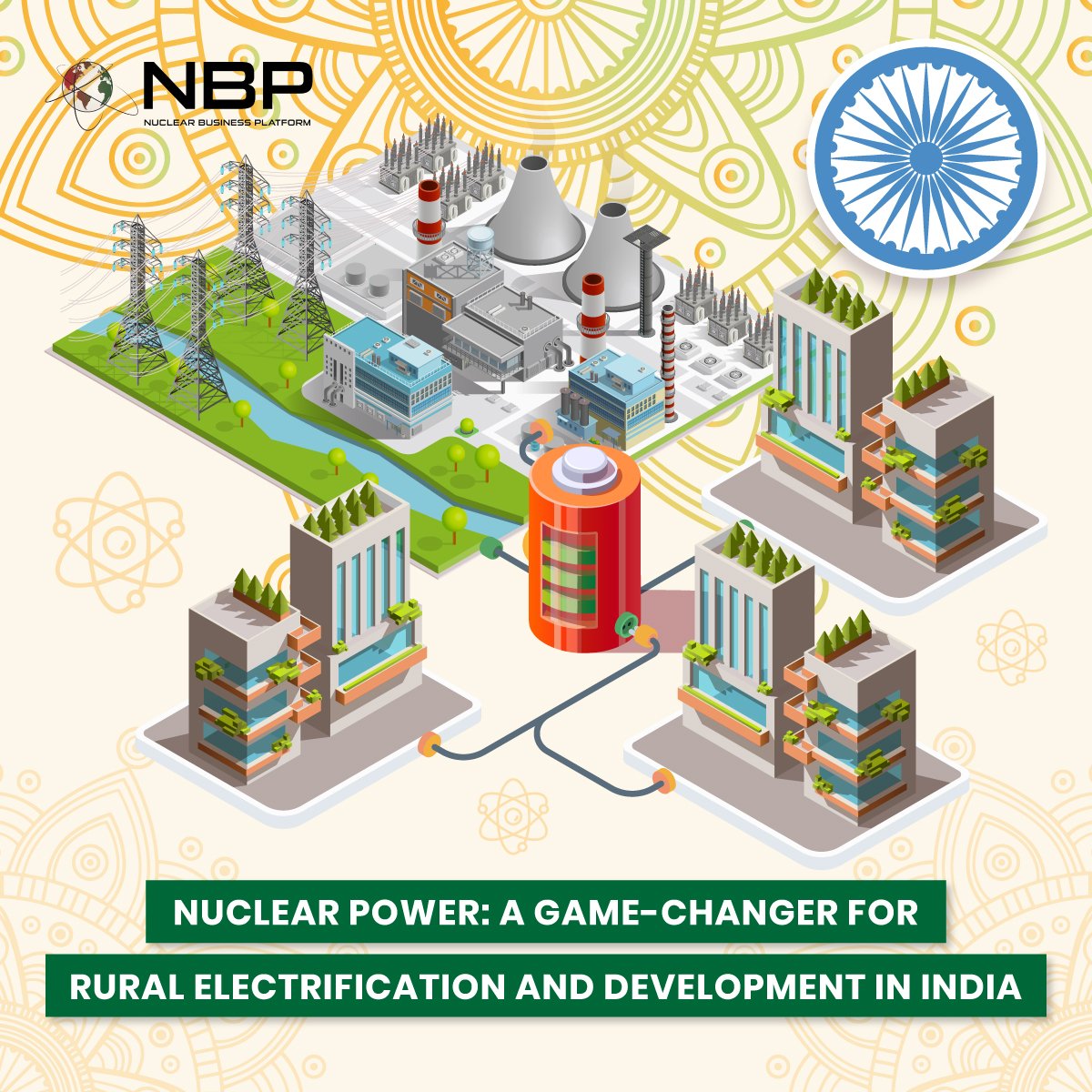Nuclear Power: A Game-Changer for Rural Electrification and Development in India
India’s quest for comprehensive rural electrification has long been hindered by challenges like infrastructural gaps, financial constraints, and insufficient last-mile connectivity. This urban-rural electricity divide not only limits equitable access to power but also slows opportunities for economic and social development across rural communities. With over 900 million people living in rural areas—compared to 508 million in urban zones—India's villages are the backbone of the nation’s economy, making their electrification critical.
Looking forward, the country’s electricity demand is expected to surge, with power consumption projected to grow at a compound annual growth rate (CAGR) of over 7% from FY24 to FY27. Rural India relies heavily on agriculture, making it one of the primary consumers of energy in these regions. Agriculture alone accounts for 20% of the nation’s total electricity consumption, largely driven by irrigation needs. In certain states, this share can rise to as high as 50%. Over recent years, the reliance on monsoon rains has lessened, shifting significantly towards groundwater, which now accounts for 90% of the water used in irrigation. To access this groundwater, farmers have secured approximately 12 million electricity connections dedicated solely to powering irrigation pumps. This substantial demand underscores the urgent need for sustainable, reliable power sources to support rural energy needs.
In this context, nuclear energy presents a transformative solution. With advancements in Small Modular Reactors (SMRs) and microreactors, India has the potential to deploy a resilient, scalable power infrastructure capable of reaching even the most remote areas. Currently, nuclear power contributes 8.18 GW to the nation’s grid, and India has ambitious plans to expand this capacity to 100 GW by 2047. As part of the rural electrification strategy, nuclear energy offers a robust path forward, aligning with India’s broader goals of sustainability and rural empowerment.
In 2018, India launched the Pradhan Mantri Sahaj Bijli Har Ghar Yojana (Saubhagya scheme) to achieve 24x7 electricity access by 2022, representing a major milestone in expanding connectivity. However, while connections were established in many rural areas, quality and reliability have remained problematic.
Addressing Persistent Challenges in Rural Power Supply
Reliable electrification in rural India faces a range of challenges that need to be addressed for sustainable growth. Last-mile connectivity remains a significant hurdle, as infrastructure often struggles to reach remote areas. Additionally, frequent power outages create instability, which undermines trust in the system and hampers productivity. Distribution companies (discoms) are burdened with financial difficulties, which further impact their ability to deliver consistent service. The low tariffs in rural regions make it especially hard for discoms to invest in the necessary upgrades for grid reliability.
Global Insights: Nuclear Energy Solutions for Rural Electrification
Nuclear energy can uniquely address the primary challenges of rural electrification in India—access, reliability, and sustainability. Recent advances in Small Modular Reactors (SMRs) and microreactors offer scalable options for consistent power delivery in isolated areas, without requiring extensive infrastructure. Several nuclear technologies from around the world showcase nuclear energy’s potential to revolutionize regional electrification:
Russia’s Akademik Lomonosov Floating Nuclear Power Plant: Using SMRs, this floating facility can power remote Arctic communities, demonstrating nuclear technology’s flexibility in geographically isolated regions.
Canada’s Project Natrium: A collaborative venture by TerraPower and GE Hitachi Nuclear Energy, this sodium-cooled reactor brings reliable, low-carbon power to rural areas, fostering local economic growth and sustainability.
South Korea’s SMART Reactor: With capabilities for electricity generation and desalination, the SMART reactor meets both power and water needs, highlighting nuclear energy's versatility.
These innovations illustrate how nuclear technology could empower rural communities in India by delivering stable, scalable, and environmentally responsible electricity.
Decentralized Energy: Unlocking Rural Potential
India’s rural regions are heavily reliant on financially unstable discoms, leading to high transmission losses. India’s transmission and distribution losses in 2022-23 were 15.8%, significantly higher than the global average of 1-2%. Although the Ujwal Discom Assurance Yojana (UDAY) scheme was introduced to alleviate discom debt, its effectiveness has been limited. Lessons from countries like China and Bangladesh demonstrate that off-grid solutions such as mini-grids and microgrids, powered by renewable sources, can provide cost-effective alternatives to grid expansion.
SMRs and microreactors are ideal for decentralized energy systems in India’s rural areas. Scalable and designed to be deployed in locations with limited infrastructure, SMRs offer a stable power supply where traditional grid access is challenging. Microreactors, which can be transported to isolated communities, provide even greater flexibility. Projects like Mlinda’s microgrids in Jharkhand and West Bengal, which have connected thousands of homes and businesses, showcase the effectiveness of small-scale solutions.
Nuclear Energy: A Transformative Force for India’s Rural Electrification
To sustainably meet India’s rural electrification demands, nuclear energy presents a compelling solution. Its reliable, scalable, and low-carbon power makes it ideal for regions traditionally underserved by standard grids. By embracing a comprehensive strategy—including policy support, infrastructure development for SMRs, active community engagement, and environmental oversight—India can harness nuclear energy’s transformative potential to bring stable electricity to its rural heartlands.
Moreover, raising awareness among rural communities about nuclear technologies will be essential to maximize these benefits. By showcasing successful nuclear programs from around the world, India can foster greater trust and understanding, empowering rural populations to embrace these innovations confidently. Rural communities have already shown openness to renewable energy solutions, and their readiness to adopt innovative technologies paves the way for nuclear energy to have a pivotal role in their future. Together, these steps could help India achieve a truly inclusive and sustainable energy landscape for generations to come.
The 5th edition of India Nuclear Business Platform (INBP) will take place in Mumbai this 19-20 November 2024. The industry meeting will feature all the officials and players across the Indian nuclear supply chain. For more information on this meeting including exhibition opportunities, click here



